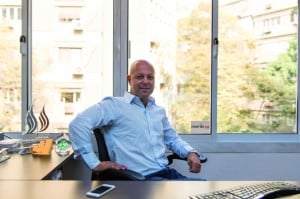Karim Khalifa reflects on the need to know how to differentiate between fleeting fads and real socio-technological trends.
With the pace of change in the world today, it’s often hard to keep up. It seems like every day there is a new technology, a new discovery, a new breakthrough (in case you hadn’t noticed, we recently sent a spaceship a total distance of 6.4bn – yes, billion – kilometres and landed it on a rock moving at 135,000 kilometres per hour)!
Almost every day I feel like there is a new application that’s changing the way we live; the way we communicate. A new online platform changing the way we trade goods, or consume information; a new wearable device to improve our health, a new way to travel, a new way to pay for things, a new way to meet people; or a new way to interact with the physical world. We’re augmenting our reality and creating imaginary alternate worlds to live in, our kitchen appliances are talking to us and our mobiles are becoming the remote controls of our lives.
From Whatsapp, Instagram and Twitter, to Square, to Uber, to Airbnb, to Tinder to Oculus Rift, to Google Glass, to Beacons… just to name a few, the list goes on. We are living through probably the most innovative, fast-paced, technological of times, and because of our global ‘hyper-connectedness’, we hear about everything, all the time, anywhere and everywhere – and this in turn inspires more and more innovation. The democratisation and ubiquity of information is truly a positive and significant step in the progress of mankind.
Yet, despite all this overload, the capacity of human attention has hardly increased since our first ancestors roamed the Earth millions of years ago. In other words, spending time somewhere or on something, is taking away attention from something else. So how do we keep up? How do we cope? How do we retain focus?
These are challenges that we face not only as human beings or consumers, but also as advertisers – particularly advertisers in the digital world, where technology is a foundation of how we interact with consumers. Overcoming these challenges is part and parcel of ultimately offering the most effective experience to consumers.
Despite the plethora of options and technologies available, we must always re-mind ourselves that advertising in the digital age must still stay true to its core essence: offering a positive experience that results in a consumer remembering and ultimately buying your product or service.
In digital this is often forgotten (how many useless apps have you downloaded from a brand and used only once?). In the meantime, the internet and technology are creating internet sensations, from foodies to fashionistas and gurus of all kinds – anyone and everyone can have the world as their audience. Essentially, brands now compete for attention with potentially every individual who has talent and has access to the world wide web.
As advertisers we need to become better at filtering the wheat from the chaff.
While less than a decade ago, there were four, maybe five key channels to base your marketing strategy on (TV, radio, print, outdoor…), today there are a countless number of potential ‘channels’ to work with. One must consider which of these are truly relevant in effectively delivering a message, which technology is truly disruptive, without falling into the trap of using technology for technology’s sake.
We must first and foremost consider peoples’ behaviours, and how they interact with technology at any given time. It is then a question of how to harness that behaviour in a user-centric approach, enhancing the users’ life, and not disrupting it. Essentially, respecting the consumer – a basic notion that is surprisingly often disregarded.
Having the right skill set at your disposal is obviously key. Audiences are becoming more sophisticated and the emphasis on quality user experience is taking centre stage. Attaining the right balance between technical know-how and creative thinking is becoming critical. This means, that coupled with their ‘traditional’ creative skills, ‘creatives’ today need to have basic product management skills and, perhaps even better, engineering backgrounds. Equally, accounts people must develop technical project management know-how. Having said that, the technology must follow the creativity, not the other way round.
It’s more crucial than ever to keep a razor-sharp focus on what’s topical, and ‘big’ (or even ‘small’) data must be harnessed. Getting the right connection between a sociological trend or mood (at the right place and time), and a brand’s essence, is what makes good advertising. While today there are significantly more opportunities to tap into the right behaviour, thought, or impulse, anywhere, anytime, if we don’t put the consumer first, the consequences are amplified more than ever before.
The key capability we must nourish, is knowing when to step back, see the woods for the trees. Knowing how to differentiate between fleeting fads and real socio-technological trends.
It’s virtually impossible to know in advance what’s the ‘next big thing’, but ‘informed’ trial and error helps us break barriers and evolve in line with our audiences.
In the information age, ignorance is a choice, and as Bob Dylan advised before the internet even existed: “You’d better start swimming or you’ll sink like a stone…”
(Karim Khalifa is co-founder and CEO of Digital Republic)










